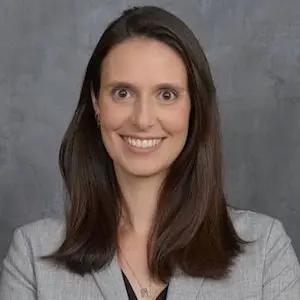Underrepresented in medicine: increasing diversity in pediatric dermatology
An interview with Victoria Barrio, MD, and Fabiana Castro Porto Silva Lopes, MD, about the Society for Pediatric Dermatology and its efforts to address diversity in the dermatology field.
An interview with HCPLive was held featuring Victoria Barrio, MD, the Equity, Diversity & Inclusion (EDI) chair for the Society for Pediatric Dermatology (SPD), and pediatric dermatologist Fabiana Castro Porto Silva Lopes, MD.
The pair addressed Lopes’s recent winning of the 2022 Underrepresented in Medicine (URiM) Mentorship Award and Barrio’s mentorship of Lopes.
“I think that one of the things that really drew me to pediatric dermatology is that people in the field are so welcoming,” Barrio said. “And the second you walk into an SPD meeting, you just feel like you're in a really comfortable caring place where people care about their patients and about each other.”
Barrio spoke about having an extensive amount of mentorship and guidance prior to going into the pediatric dermatology subfield, as well as the importance of spreading the word about the field itself.
“Because, you know, I had gotten to residency for pediatrics because I hadn't had exposure to pediatric dermatology,” she explained. “And I think that's one of the things that we're really trying to do is get exposure to pediatric dermatology to more people.”
Barrio’s mentee, Lopes, spoke about SPD’s URiM award and her experiences prior to arriving in the US from Brazil.
“The pediatric dermatology field and community that we have it's amazing and very welcoming, but I have a totally different background,” Lopes said. “I'm from Brazil, and I completed all my medical education there and I also did a dermatology residency there. I didn't complete a pediatric dermatology fellowship. I worked for a while as a dermatologist in Brazil before moving to the US.”
Lopes went on to describe her beginnings as well as the changes she encountered after moving to the US to continue working in the field she felt passionate about.
“Talking about the obstacles that I was able to overcome, I think my first one was to be accepted into my medical school,” she explained. “And I was going to move to the US to take the (United States Medical Licensing Examination) steps during a pandemic with a 4-year-old and a 2-year-old at home without any family around to support us. And I was able to match in the extremely difficult field of dermatology here as an international medical graduate.”
Barrio spoke on the field of medicine’s need for greater access for underrepresented groups to become physicians in general, as well as specifically in pediatric dermatology.
“Representation in medicine, in general, is just really lacking,” Barrio explained. “You know, here in San Diego, for example, we have 34% of the population is Latino. To get into undergraduates at UCSD, about 20% are Latino. And when you get into the medical school back in 2019, it was about 10%. So you're going from 34% population to 10% representation of the Latino population in the medical schools.”
Lopes also spoke about representation in the medical field both in Brazil and in the US, explaining her experiences.
“You know, dermatology is so difficult and it's so hard even for American medical graduates,” Lopes explained. “I think I was just like, I was empowering myself to say no…I want to be different. And I had a very good mentor who believed in me and told me otherwise. But I agree with Dr. Barrio, there is a lack of representation in medicine and in dermatology. It's something that if you really don't see anyone like you in this field, you automatically think that you may not occupy that position.”
Barrio added to Lopes’s point about the field and about other pediatric dermatologists working with SPD who choose the field despite various kinds of barriers.
“If you ask the residents, they'll tell you…our program is one of the hardest rotations in pediatric dermatology, because we just put in so many hours, and we have so many patients that we have to see,” she said. “But what that means is that the people that go into it, really love it. And they do it because it's really their calling.”
For more information about the URiM award and the Society for Pediatric Dermatology, visit their website.
Fabiana Castro Porto Silva Lopes, MD

This article was published by our sister publication HCP Live.
Recognize & Refer: Hemangiomas in pediatrics
July 17th 2019Contemporary Pediatrics sits down exclusively with Sheila Fallon Friedlander, MD, a professor dermatology and pediatrics, to discuss the one key condition for which she believes community pediatricians should be especially aware-hemangiomas.